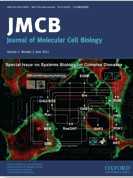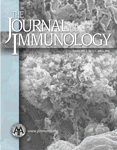J Clin Invest.:新研究揭示肥胖的Wnt途径分子机制
2012-07-03 bo 生物谷
当整个世界在人体水平上对肥胖宣战的时候,密歇根州大学的科学家在微观层面已经取得了令人惊奇发现,这也许可以帮助人类取得这场斗争的胜利。 他们的工作有助于解释为什么肥胖发生时,贮脂细胞会变得更胖,燃烧脂肪的速度会变慢。如果他们的研究结果可以从小鼠推广到人类,这将为抗击肥胖提供一个新的药物靶点。相关研究论文在线发表于6月25日的Journal of Clinical Investigation杂志。
当整个世界在人体水平上对肥胖宣战的时候,密歇根州大学的科学家在微观层面已经取得了令人惊奇发现,这也许可以帮助人类取得这场斗争的胜利。
他们的工作有助于解释为什么肥胖发生时,贮脂细胞会变得更胖,燃烧脂肪的速度会变慢。如果他们的研究结果可以从小鼠推广到人类,这将为抗击肥胖提供一个新的药物靶点。相关研究论文在线发表于6月25日的Journal of Clinical Investigation杂志。
前体脂肪细胞分泌的几种Wnt家族蛋白,通过自分泌/旁分泌机制发挥作用,抑制脂肪形成。分泌型卷曲相关蛋白(SFRPs)常使Wnt配体的活性下调。 sfrp5在脂肪细胞分化过程中被强烈诱导增加。在肥胖发生时,它也在脂肪细胞表达增加,这大概是为了抵消Wnt信号。
研究者假设肥胖引起的Sfrp5表达可通过抑制内源性脂肪形成过程,来促进新的脂肪细胞生成。据推测,缺乏功能性SFRP5的小鼠将抵抗饮食诱导的肥胖。然而,与假设相悖的是,研究者发现,SFRP5缺陷小鼠的脂肪组织的脂肪细胞数目与对照组小鼠相似,但其体积大的脂肪细胞数目却较少。
将SFRP5缺陷小鼠的脂肪组织移植到瘦素受体缺失的小鼠后,研究者发现SFRP5缺陷导致的影响是组织自主性调节的。在来源于SFRP5缺陷小鼠的脂肪组织和培养的脂肪细胞中,线粒体基因表达均增加。在脂肪细胞中, SFRP5的缺乏,通过增加线粒体活性来刺激氧化能力。这一作用,部分是由PGC1α和线粒体转录因子A来介导的。 WNT3A也可增加氧的消耗和线粒体基因的表达。
因此,该研究结果支持这样的脂肪生成模型:在肥胖过程中,SFRP5抑制Wnt信号,抑制氧化代谢,刺激脂肪细胞的生长。

doi:10.1016/j.cell.2011.10.017
PMC:
PMID:
Secreted frizzled-related protein 5 suppresses adipocyte mitochondrial metabolism through WNT inhibition
Hiroyuki Mori, Tyler C. Prestwich, Michael A. Reid, Kenneth A. Longo, Isabelle Gerin, William P. Cawthorn, Vedrana S. Susulic, Venkatesh Krishnan, Andy Greenfield, Ormond A. MacDougald
Preadipocytes secrete several WNT family proteins that act through autocrine/paracrine mechanisms to inhibit adipogenesis. The activity of WNT ligands is often decreased by secreted frizzled-related proteins (SFRPs). Sfrp5 is strongly induced during adipocyte differentiation and increases in adipocytes during obesity, presumably to counteract WNT signaling. We tested the hypothesis that obesity-induced Sfrp5 expression promotes the development of new adipocytes by inhibiting endogenous suppressors of adipogenesis. As predicted, mice that lack functional SFRP5 were resistant to diet-induced obesity. However, counter to our hypothesis, we found that adipose tissue of SFRP5-deficient mice had similar numbers of adipocytes, but a reduction in large adipocytes. Transplantation of adipose tissue from SFRP5-deficient mice into leptin receptor–deficient mice indicated that the effects of SFRP5 deficiency are tissue-autonomous. Mitochondrial gene expression was increased in adipose tissue and cultured adipocytes from SFRP5-deficient mice. In adipocytes, lack of SFRP5 stimulated oxidative capacity through increased mitochondrial activity, which was mediated in part by PGC1α and mitochondrial transcription factor A. WNT3a also increased oxygen consumption and the expression of mitochondrial genes. Thus, our findings support a model of adipogenesis in which SFRP5 inhibits WNT signaling to suppress oxidative metabolism and stimulate adipocyte growth during obesity.
本网站所有内容来源注明为“梅斯医学”或“MedSci原创”的文字、图片和音视频资料,版权均属于梅斯医学所有。非经授权,任何媒体、网站或个人不得转载,授权转载时须注明来源为“梅斯医学”。其它来源的文章系转载文章,或“梅斯号”自媒体发布的文章,仅系出于传递更多信息之目的,本站仅负责审核内容合规,其内容不代表本站立场,本站不负责内容的准确性和版权。如果存在侵权、或不希望被转载的媒体或个人可与我们联系,我们将立即进行删除处理。
在此留言














#EST#
81
#WNT#
79